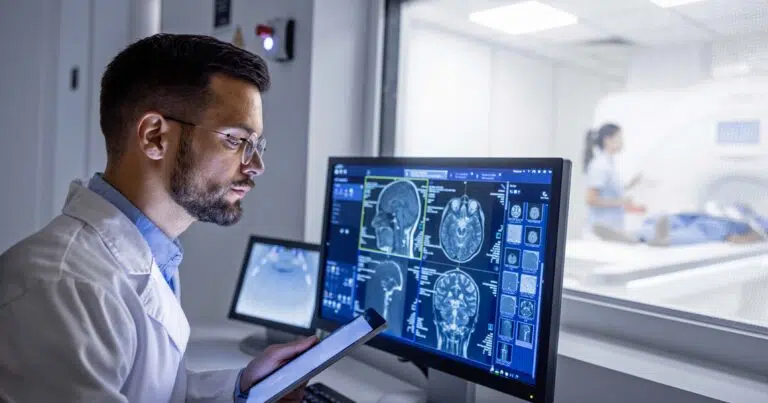Multi-modality Technologist Career Guide
Looking for a different career guide?
Overview
A Multi-Modality Technologist is a skilled allied healthcare professional who specializes in operating a variety of imaging equipment to assist in diagnosing and treating medical conditions. These technologists play a crucial role in capturing high-quality images of the human body using different modalities such as X-ray, MRI, CT, ultrasound and more.
Essential Job Functions:
Multi-Modality Technologists work closely with physicians to perform imaging procedures that aid in the diagnosis and treatment of patients. They position patients correctly, operate imaging equipment, ensure patient safety, review images for quality and collaborate with other healthcare team members.
Education
To become a Multi-Modality Technologist, individuals typically need to complete an accredited radiologic technology program, which can result in an associate degree or bachelor's degree. These programs provide comprehensive training in various imaging modalities.
Skills
Successful Staff and Travel Multi-Modality Technologists possess a deep understanding of anatomy, patient positioning, radiation safety and image quality. They need strong technical skills to operate a range of imaging equipment and the ability to communicate effectively with patients to ensure their comfort and cooperation during procedures.
Responsibilities
Multi-Modality Technologists are responsible for obtaining accurate images, maintaining patient records, adhering to safety protocols and collaborating with radiologists and other healthcare professionals to ensure proper diagnosis and treatment planning.
Salary Insights
The average salary for a Multi-modality Technologist is $2,535.08 per week.
Last updated on February 17, 2025. Based on active jobs on Vivian.com.
Pros & Cons
Becoming a Multi-Modality Technologist offers a dynamic and fulfilling career in the healthcare field. This role provides the opportunity to work with cutting-edge technology, contribute to accurate diagnoses and directly impact patient care.
One of the benefits is the versatility of the role – technologists can work in various healthcare settings such as hospitals, clinics and imaging centers. Additionally, the demand for skilled imaging professionals continues to grow.
However, the job can be physically demanding, involving long periods of standing, maneuvering patients and operating heavy equipment. Exposure to radiation also requires strict adherence to safety protocols. Furthermore, working with patients who may be anxious or in pain can be emotionally challenging.
In conclusion, a career as a Multi-Modality Technologist offers a rewarding path for individuals passionate about healthcare and technology. By completing the necessary education, obtaining certifications and developing the required skills, aspiring technologists can embark on a fulfilling journey as essential members
Some of the content on this page was enhanced using artificial intelligence.
Join over 1 million healthcare workers that are getting a head start with Vivian.
Join Vivian






